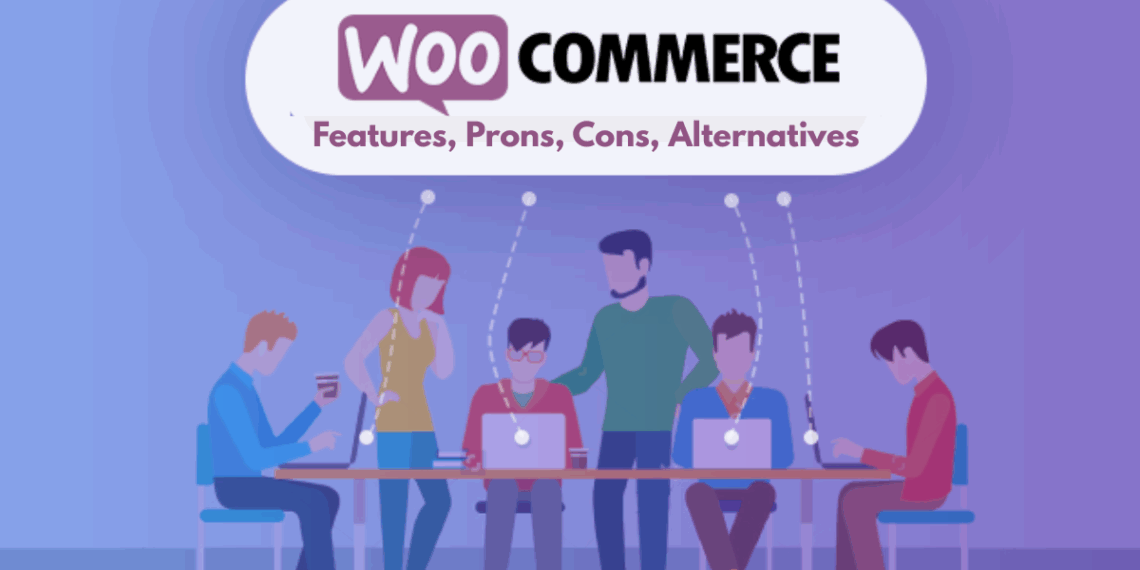WooCommerce is a free, open-source e-commerce plugin designed for WordPress websites. It transforms any WordPress site into a powerful online store — whether you’re selling physical products, digital goods, services, or subscriptions. With millions of active stores and deep integration into the WordPress ecosystem, it’s a popular choice for startups wanting full control over their site. But this flexibility comes with trade-offs. Unlike hosted platforms like Shopify or BigCommerce, WooCommerce requires more setup, self-hosting, and ongoing management.📂
In this guide, we’ll unpack everything WooCommerce has to offer—from flexibility and ownership to costs and customization—so you can decide if it’s the smart launchpad for your startup’s e-commerce journey. 🌟🚀
WooCommerce Overview
WooCommerce is a plugin that runs on top of WordPress, converting your content-focused site into a full-fledged e-commerce platform 🛒. It supports a wide range of business models: from single-product shops and digital marketplaces to complex multi-product catalogs, including subscription-based services 🔁 and appointment bookings 📅. Because it’s open-source 🌐, startups have complete ownership and customization rights over their store—everything from storefront layout to checkout flow can be modified to fit your brand vision.
However, WooCommerce isn’t a plug-and-play SaaS platform. It’s a toolkit that gives you the freedom to build your own solution. That means its users are responsible for their own hosting, updates, security 🔒, plugin management, and performance optimization ⚙️. This level of control is empowering for technical teams but can be daunting for founders without coding experience. Still, with access to thousands of integrations, professional themes, and an active global community 🌍, WooCommerce offers an unmatched foundation for startups ready to invest in a long-term, scalable e-commerce presence .
WooCommerce Key Features
WooCommerce shines through its modular design and feature-rich ecosystem. Whether you’re launching your very first store or scaling an existing operation, the platform’s capabilities can adapt to your evolving needs. Below are the most startup-relevant features that make WooCommerce a flexible, powerful solution for online selling:
🎨 Customization & Themes
WooCommerce integrates seamlessly with thousands of WordPress themes, both free and paid. Developers can customize every aspect of the storefront using plugins, CSS, or even by editing code directly.
⚖️ Product & Inventory Management
Supports unlimited products, product variants, downloadable files, subscriptions, bookings, and affiliate listings. Includes stock tracking and backorder alerts.
💳 Flexible Payment Gateways
Includes WooPayments (powered by Stripe), PayPal, Square, Apple Pay, Google Pay, and 100+ regional gateways. Choose the right fit for your market.
📦 Shipping Zones & Calculations
Set up shipping zones, flat rates, free shipping thresholds, and integrate with USPS, UPS, FedEx, and more using extensions.
📈 SEO-Friendly Platform
Built on WordPress, WooCommerce is inherently SEO-strong. Pair with plugins like Yoast SEO or Rank Math for powerful control over metadata and product rankings.
📊 Analytics & Reports
Built-in dashboard for orders, revenue, taxes, and product performance. Easily extend with Google Analytics or Metorik for deeper insights.
🚀 Scalable Architecture
From one product to 100,000+, WooCommerce can scale with the right hosting setup and caching strategy. Used by both small shops and global enterprises.
🔒 Security Controls
Security is user-managed: select a secure host, install SSL, use strong passwords, and consider plugins like Wordfence or Sucuri.

WooCommerce Pros and Cons
👍 Pros
- Free to start (core plugin)
- Full data ownership
- High customization potential
- Massive ecosystem of plugins & themes
- Strong SEO foundations
- Global community & support forums
👎 Cons
- Requires technical skills to maintain
- No official support unless paying for extensions
- Hosting, plugins, and dev time add up
- Slower performance if poorly optimized
- Plugin conflicts can disrupt operations
Considering WooCommerce for Startups
Before jumping into WooCommerce, it’s important to assess whether it truly aligns with your startup’s resources, goals, and capabilities. This section offers a quick diagnostic to help you evaluate the platform’s fit based on your technical skills, budget, growth plans, and operational needs. Each question below is designed to clarify if its strengths match your current and future priorities.
📌 Do you have in-house WordPress skills?
If you or someone on your team has experience with WordPress development, you’ll be able to leverage WooCommerce to its fullest potential and save on outsourcing costs.
💰 Are you aiming for low initial costs?
WooCommerce offers a free core platform and many no-cost themes and plugins, making it a budget-friendly option for bootstrapped startups.
🔗 Need deep custom features or workflows?
If your business model requires specialized product types, checkout flows, or integrations, WooCommerce’s open-source flexibility can handle even the most tailored needs.
📆 Will you manage updates & security regularly?
WooCommerce gives you control over your site, but that comes with the need to regularly update plugins, monitor security, and maintain performance.
📏 Selling digital goods, subscriptions, or services?
WooCommerce excels in supporting varied business types—from downloadable products and SaaS tools to subscription boxes and appointment bookings.
📂 Will you scale traffic/products over time?
Planning to grow your store to thousands of SKUs or handle heavy traffic? WooCommerce is scalable, but you’ll need quality hosting and optimization.
🧑💻 Can you invest in managed hosting or developer help?
If you don’t have the tech skills in-house, budgeting for developer assistance or a managed hosting provider can ensure smoother operations and faster growth.

WooCommerce Plans and Pricing
WooCommerce is free to install, but actual costs depend on your setup. Here’s a breakdown:
| Plan Type | Monthly Cost (Est.) | Inclusions |
|---|---|---|
| Basic DIY | $10–$30 | Shared hosting, free theme, free plugins |
| Growing Startup | $50–$250 | Managed hosting, premium theme, core paid plugins |
| Scalable Store | $250+ | VPS hosting, subscriptions, dev support, advanced plugins |
Expect $200–$1,000+ annually depending on business size and needs.
WooCommerce Promo Code / Startup Discount Info
While WooCommerce itself is free, many hosting providers and plugin developers offer new user discounts 🎁 or seasonal deals 🛍️. Typical savings range from 20% to 50% for 6–12 months 🗓️. Startups should also explore managed WooCommerce hosting bundles, which often include SSL, backups, and premium plugins at a reduced rate.
Comparing WooCommerce with Alternatives
| Feature | WooCommerce | Shopify | BigCommerce |
|---|---|---|---|
| Free tier🆓 | Yes | No | No |
| Customization📲 | Very High | Medium | Medium |
| SEO Strength💹 | High | Medium | High |
| Support Model🤝 | Community + Paid | 24/7 | 24/7 |
| Starting Price💵 | $0 | $29/month | $29/month |

FAQs
❓ Is WooCommerce easy to set up for non-tech founders?
It’s manageable with WordPress experience. New users may benefit from setup guides or managed hosting providers.
❓ Does WooCommerce integrate with other tools like Slack or Zapier?
Yes, it supports many integrations via plugins or third-party services like Zapier.
❓ Are there hidden costs?
While the core is free, costs for hosting, plugins, themes, and developers can add up quickly.
❓ Is there a mobile app for managing my store?
Yes, the WooCommerce app lets you manage orders and view analytics on the go.
❓ Can I fully customize the checkout and user experience?
Absolutely. With enough dev skills (or plugins), every part of the UX can be tailored.
❓ What kind of support does WooCommerce offer?
Primarily community support unless you’re paying for official extensions or managed hosting.
Final Thoughts
WooCommerce is ideal for startups that value control, customization, and scalability — especially those already familiar with WordPress. 🚀🔧 It’s cost-effective to start and can evolve into a robust enterprise store as your business grows. From tweaking your storefront 🎨 to integrating third-party tools 🔌, WooCommerce empowers startups to build unique, flexible experiences tailored to their brand.
That said, this power comes with added responsibilities. WooCommerce requires regular maintenance 🛠️, plugin updates 🔁, security monitoring 🔐, and hosting optimization ⚙️. If your team lacks the technical skills or time to manage these aspects, you may face a steeper learning curve compared to all-in-one hosted platforms.
Ultimately, WooCommerce gives you freedom 🕊️, but with responsibility 🧱. If that trade-off aligns with your team and growth strategy—and you’re ready to invest the time or resources—it can be a game-changing tool for building a long-term, scalable e-commerce operation 📈.










